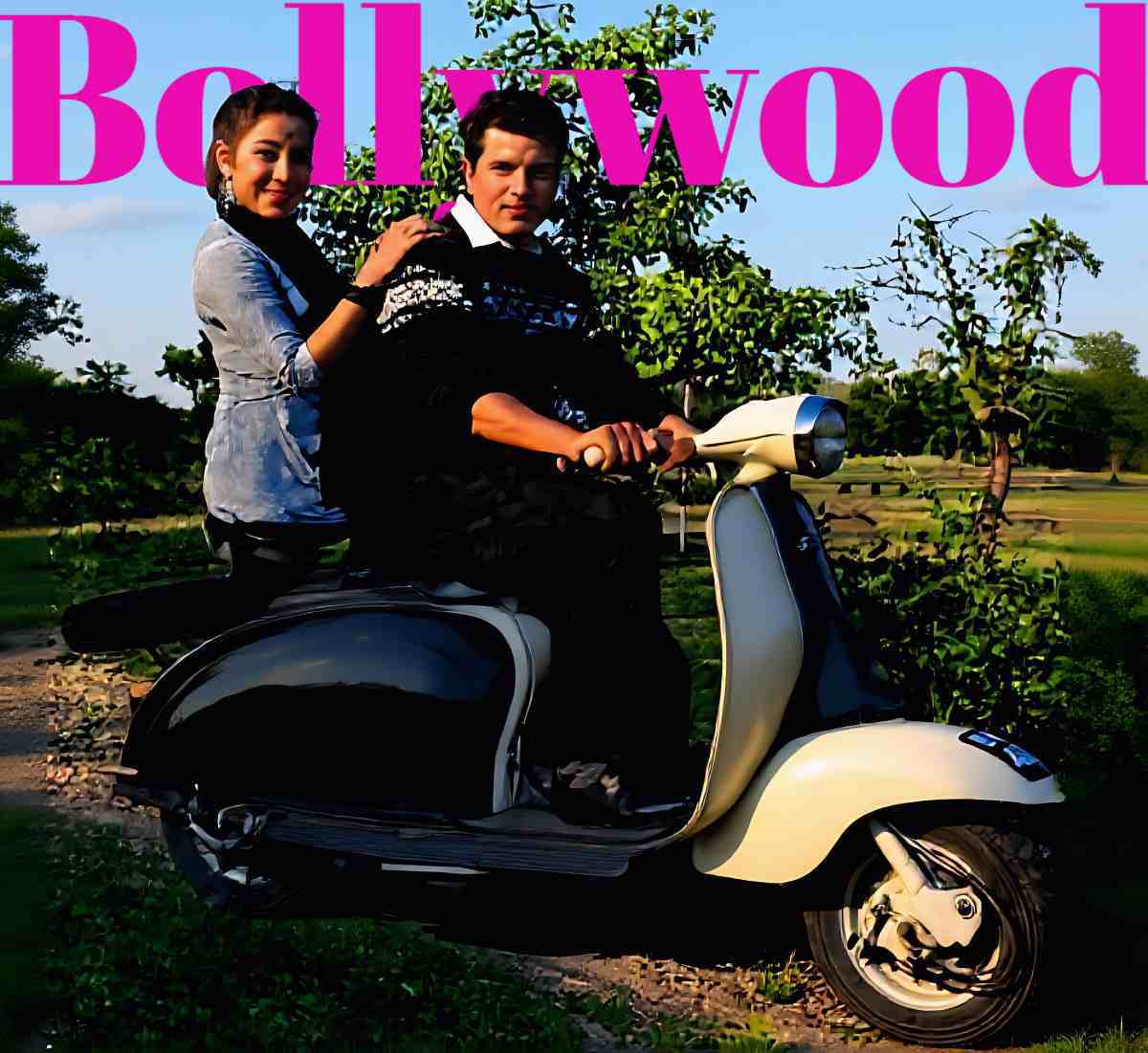- Posted on
- • History
Humara Bajaj, Hamari Lambretta” – How Two-Stroke Scooters Became Bollywood’s Favourite Prop and India’s Fifth Family Member
- Author
-
-

- User
- Torque
- Posts by this author
- Posts by this author
-

“Humara Bajaj, Hamari Lambretta” – How Two-Stroke Scooters Became Bollywood’s Favourite Prop and India’s Fifth Family Member
Reading time: 5 min | Word count: ≈ 830
Table of Contents
- 1967–1989: The Scooter as Bollywood’s Wing-Man
- “Humara Bajaj” – When the Chetak Became the Middle-Class Hero
- Mom-Dad-Kids-and-Scooter: The Demographic Magic Quadrant
- Symbolism in Song & Script – What the Scooter Really Stood For
- Gender Shift – Kinetic Honda Lets the Heroine Twist-n-Go
- Decline on Screen – Why the 2000s Switched to Sedans
- Nostalgia Loop – OTT, Memes & the ₹2-lakh Restoration Market
- Quick-Fire Trivia – 6 Iconic Shots Every Millennial Remembers
1. 1967–1989: The Scooter as Bollywood’s Wing-Man
- 1967 – An Evening in Paris: Shammi Kapoor woos Sharmila Tagore on a Lambretta Li150, singing “Hoga Tumse Kal” as the entire posse rides shotgun through hill roads—the first mass-market scooter song.
- 1973 – Bobby: Rishi Kapoor’s red Vespa Sprint becomes teenage rebellion on two wheels; sales of Vespa Primavera jump 18% the next quarter.
- 1985 – Arjun: Sunny Deol’s Bajaj Super weaves through Mumbai traffic—the angry-young-man scooter, dented tank matching his rage.
Directors loved the scooter because:
- No gear-clutch fuss = actors could emote while “riding”.
- Flat floorboard = heroine’s saree didn’t snag; camera caught both faces in one frame.
2. “Humara Bajaj” – When the Chetak Became the Middle-Class Hero
Bajaj’s 1989 ad campaign turned the Chetak from transport into a statement of national pride:
“Buland Bharat ki buland tasveer… Humara Bajaj.”
The commercial showed three generations squeezing onto an ivory Chetak, daughter-in-law holding a baby, Diwali lanterns in the background—the first time Indian advertising sold a vehicle as family values.
Impact:
- Waiting list ballooned to 10 years; black-market premiums touched ₹5,000 (half an entry-level salary then).
- Bajaj’s market share in scooters peaked at 48% in 1992.
3. Mom-Dad-Kids-and-Scooter: The Demographic Magic Quadrant
The Seating Hierarchy
- Front – youngest child, feet on mudguard, acting as human GPS.
- Middle – mother, side-saddle, handbag hooked on steering column hook.
- Pillion – father, one hand on kid’s shoulder, other on throttle.
- Rear carrier – elder sibling perched on spare-wheel, holding school bag and vegetable jhola.
“Our Lambretta easily accommodated our family of four when we were kids… the sloping tail had a spare tyre that doubled as an extra seat.” – Rohit Saran, 45, Udaipur.
Social Science
Sociologist Dr Leela James (CUSAT, 2018) calls the scooter “the mobile living-room”—private space in chaotic public roads, reinforcing patriarchal order (father controls speed, mother guards kids) while projecting respectability.
4. Symbolism in Song & Script – What the Scooter Really Stood For
| Era | Plot Device | Example |
|---|---|---|
| 1960s – Elite Flirtation | Foreign-return hero woos heroine | An Evening in Paris Lambretta convoy |
| 1970s – Middle-class Aspiration | First big purchase after wedding | Chhoti Si Baat – Amol Palekar’s Vespa as confidence booster |
| 1980s – Family Unity | Entire clan rides to railway station | Mr India – Sridevi on Kinetic Honda DX, kids stacked behind |
| 1990s – Gender Shift | Heroine rides alone, signalling independence | Dil Hai Ke Manta Nahin – Pooja Bhatt’s Vespa PK |
The blue smoke trail became visual shorthand for “time moving forward”—editors used it to transition from flash-back to present.
5. Gender Shift – Kinetic Honda Lets the Heroine Twist-n-Go
1984 launch of Kinetic Honda DX (98 cc, electric-start, CVT) removed kick-start strength from the equation.
- 1987 – Mr India: Sridevi’s Scarlet Red DX becomes fashion statement; sales to women jump from 18% to 34% within a year.
- 1993 – Baazigar: Kajol escapes Shah Rukh on a ZX Zoom, helmet dangling—the first chase sequence on a gearless scooter.
Cultural fallout:
- Driving schools in Mumbai & Delhi report 40% female enrolment for scooter license by 1990—double the 1983 figure.
- Advertisers coin “Twist-n-Go Freedom”, positioning scooter as equaliser, not dowry gift.
6. Decline on Screen – Why the 2000s Switched to Sedans
- Economic liberalisation – cars became affordable; Maruti 800 replaced scooter as aspiration.
- Emission norms – Bharat Stage II (2001) killed two-strokes; heroes upgraded to Suzuki Hayabusa & BMW 3-Series.
- Plot evolution – NRIs and urban cool needed global metal; scooters looked “small-town”.
Last major scooter cameo: Ranbir Kapoor’s chrome Bajaj Super in Rocket Singh: Salesman of the Year (2009) – used ironically to show middle-class roots.
7. Nostalgia Loop – OTT, Memes & the ₹2-lakh Restoration Market
- 2021 – Panchayat (Amazon Prime): Bajaj Chetak ferrying village secretary recreates “Humara Bajaj” meme, spikes used-Chetak prices by 25%.
- Instagram pages – @chetak_diaries, @lambretta_love – >200k followers, daily #BlueSmokeChallenge reels.
- Restoration cost – concours Bajaj Super now touches ₹2 lakh (frame-up, NOS badge, hand-painted pin-stripe).
Psychologist take: Dr Nandita Venkatesh (NIMHANS) – “Millennials buy restored scooters to anchor identity to a simpler, pre-digital India.”
8. Quick-Fire Trivia – 6 Iconic Shots Every Millennial Remembers
- Shammi Kapoor drumming on Lambretta handle-bar – An Evening in Paris (1967).
- Amol Palekar pushing Vespa uphill – Chhoti Si Baat (1976) – metaphor for life’s struggles.
- Sridevi in polka-dots revs Kinetic Honda – Mr India (1987).
- “Hamara Bajaj” family montage – Diwali ad (1989) – still screened in MBA marketing classes.
- Ranbir Kapoor flips open Chetak seat to hide sales files – Rocket Singh (2009).
- Jitendra Kumar kicks Chetak, exhaust haze fills frame – Panchayat S02 (2021) – OTT nostalgia gold.
Bottom Line
From Shammi Kapoor’s hillside flirtation to your grandfather ferrying four kids to school, the two-stroke scooter was more than transport—it was Bollywood’s co-actor and India’s fifth family member.
Every blue puff on screen whispered: “Aspire, but stay rooted.”
Today, as restored Chetaks fetch ₹2 lakh and Instagram reels loop “Humara Bajaj” jingles, the scooter’s cultural exhaust still hangs thick in Indian air—and memory.
